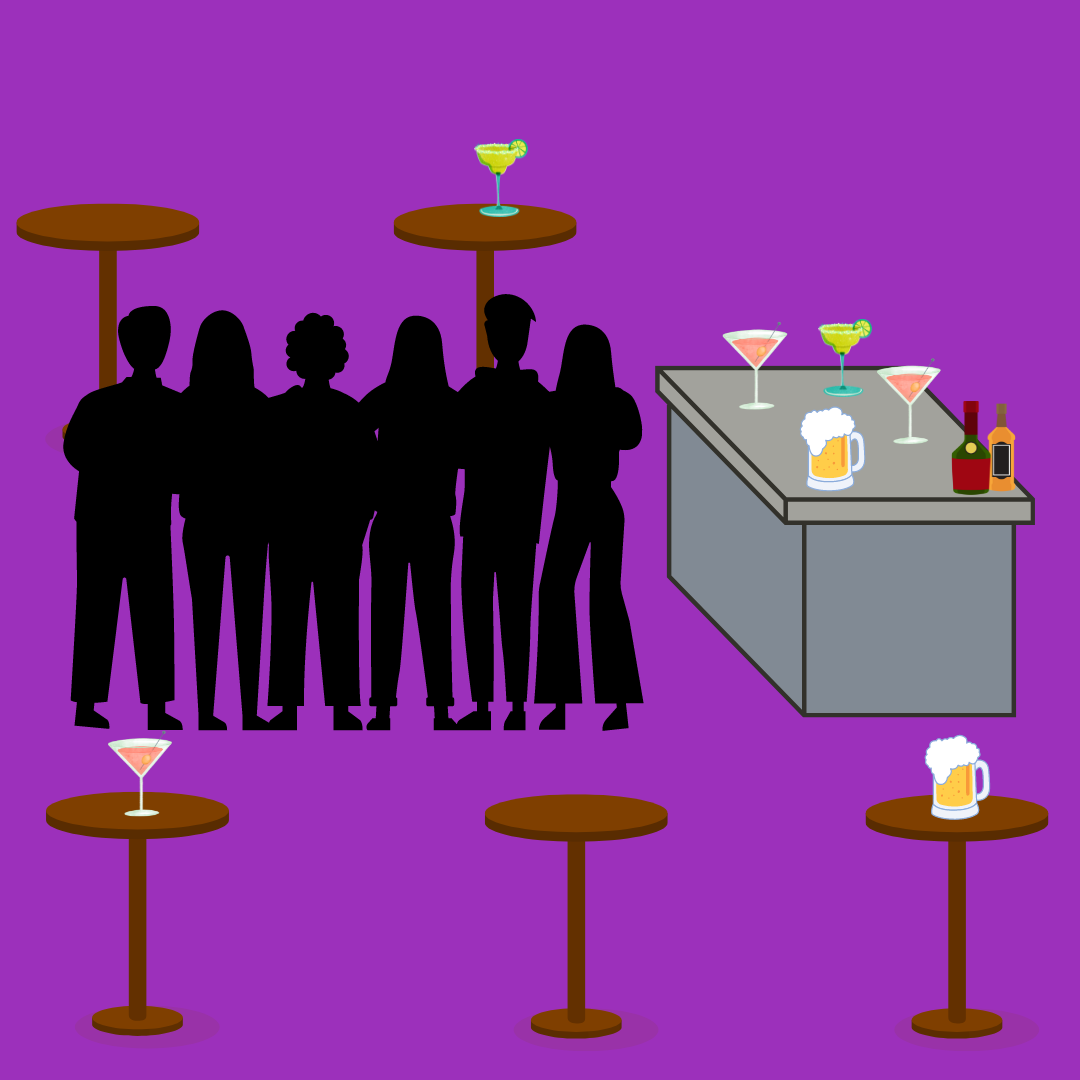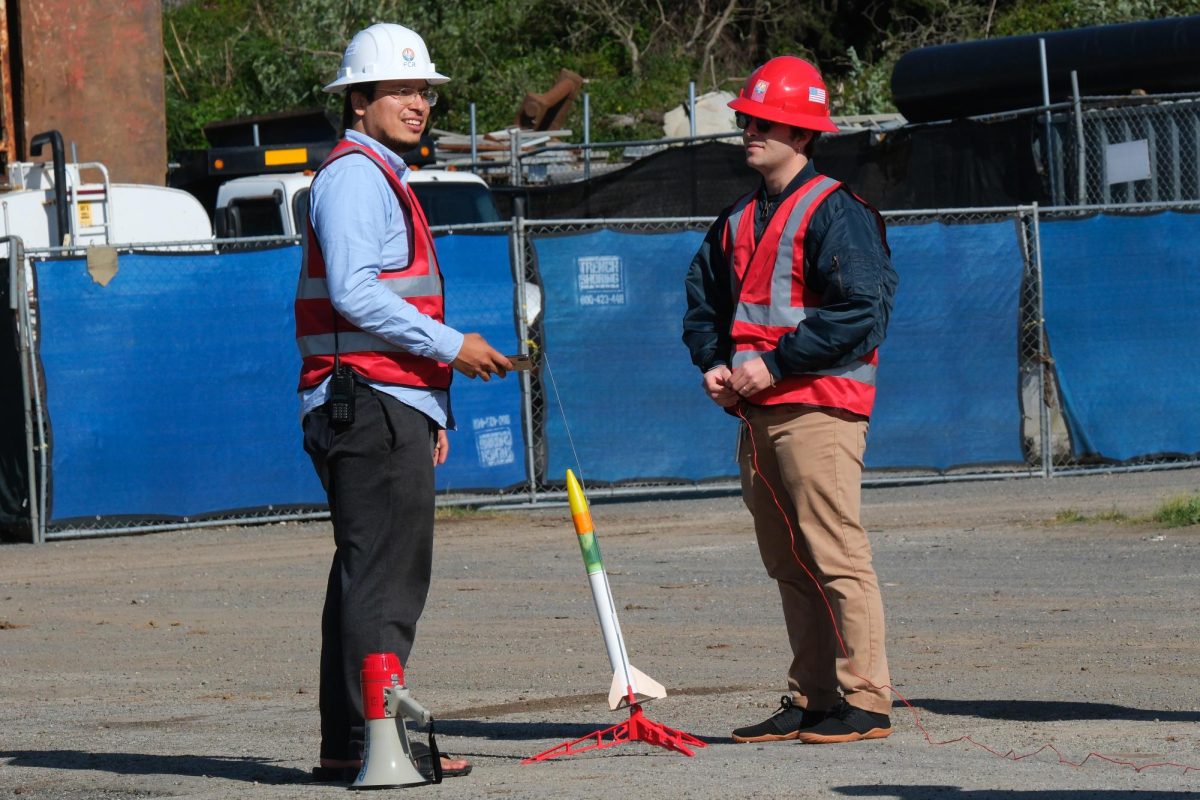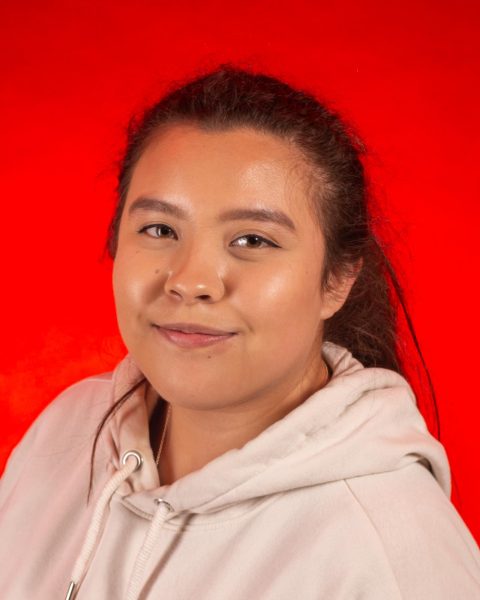In 2021, students were home, not drinking or socializing much and were restricted to communicating with their peers virtually. Students go through the same routine of online classes either staring at the screen and paying attention or having the class as background noise while they’re scrolling through their phone or doing something else. Some students even turned 21 during the pandemic. On a random day, students received a notification to fill out a survey for the National College Health Assessment.
The National College Health Assessment is an annual survey conducted on college campuses nationwide. However, it is only administered every two to three years within the CSU system. The NCHA evaluates the range of health and wellness obstacles that might be affecting students and their academic performance. The assessment ranges from asking students simple questions, such as if they wear their seatbelts, to more in-depth questions revolving around mental health, feeling belonging on campus and substance use. Once the deadline is over, all of the responses are compiled into a report. From Feb. 26 to March 15, ten thousand SF State students were randomly selected to fill out the survey.
Karen Boyce, director of Health Promotion & Wellness, compared this semester’s survey data to that of Spring 2021’s. Boyce said in an email that after looking at the data, 46.6% of students consumed alcohol in the last 30 days from when the survey was administered. The 2021 survey summary reported 50.5% of students consumed alcohol in the last 30 days. There has been about a 4% decrease since 2021.
“We use [the survey] to get a sense on what the primary substances that SF State students are using [and] how much,” said Boyce. “A question asked about any alcohol use within the last 30 days gives us a little sense of how are people using alcohol, generally.”
The 2018 survey summary revealed that 56.3% of students reported consuming alcohol within the past 30 days, creating a 9.7% decrease in alcohol consumption since then. In 2018, 26.3% of students reported binge-drinking, while in 2024, the report was 15.3%. From the 2021 survey up until now, there is less than a 1% increase, with 14.6% of students reportedly binge-drinking, but overall, there has been an 11% decrease since 2018. Before seeing the 2024 data, Boyce said there were caveats within the decrease in numbers from 2018 to 2021. Now having the numbers for this semester, SF State’s drinking culture becomes clearer.
Back on Campus
Coming back to campus after the COVID-19 pandemic was a transition for many students. Getting used to being in a school setting with many students again while still wearing masks took some adjustment. Some students finally moved in on campus leaving home. People were socializing again as everything was slowly opening back up. Others had to get used to using public transportation.
SF State’s reputation as a “commuter school,” doesn’t add much to the drinking-friendly atmosphere. Throughout the week, buses stop in front of Station Cafe dropping off and picking up groups of students at a time. Many students are leaving campus squeezed inside of a bus for what is typically only the first leg of their journey as they get dropped off somewhere in SF, BART or CalTrain for a time-consuming commute outside the city. By 5 p.m., the campus begins to quiet down as students rush to get back home to another city; all who are left are students mainly attending evening classes, doing school work in the library, or spending their spare time on campus hanging around.
“A lot of the people I’ve gotten to know here—they commute an hour or less,” said Alysa Orillaza, third-year race, ethnicity and health major. “I personally commute as well, so I’m pretty much in and out of here just going to classes. There’s not really a big party scene as well, let alone a big social scene.”
The Party Scene
Colleges are often assumed to throw big parties at fraternity or sorority houses where kegs are available, cups are everywhere just like how movies portray it sometimes: the night ending with sleeping students, red cups and empty bottles scattered across any given space and students consuming more than needed. However, at SF State, it seems the drinking culture is not as present as other colleges with prominent fraternities, sororities or sports cultures where one would see higher rates of binge drinking.
“Since a lot of [parties] are in dorms, they’re a lot less rowdy and hectic,” said Surat Ebata, who is in his third semester majoring in political science. ”It’s not like a frat party at Berkeley or something where they have a whole house, like a whole street—you can just do whatever.”
With dorms on campus, Ebata thinks there are some rules that have some influence on parties other than the less hectic students. According to SF State’s Community Living Standards Guide, quiet hours are between 10 p.m. and 8 a.m.—a rule all students living on campus must follow.
“I went to [a party]last night and it was in Daly City, but they’re from SF State but I’d say a lot of them—I’d say like 60% of them—are on campus,” said Ebata.
Now, Ebata only drinks socially about two times a week when he’s with friends or at a party, 95% of the time drinking a bottle of wine.
“I think it’s 10% [alcohol] or something and it tastes good. […] so that’s my go-to,” said Ebata. “Here at SF State, I drink a lot less because I’m getting a little older, hangovers are hitting a little harder, but also I wanted to turn my life around, I wanted to get away from that life.”
Since he has gone to several SF State-related parties, he’s noticed that students are more careful with their drinking.
“I believe people know to control themselves. There’s always that outlier that 5% of people don’t know their limit, they’re throwing up on the carpet or they’re on the streets screaming and stuff,” said Ebata.
With his previous job in the nightlife in New Zealand, Ebata got to see different age groups drinking, and noticed that sometimes when 18 to 21-year-olds get drunk, they take care of each other compared to higher age group, where they tend to get more drunk.
Giovanna Gines, a third-year student majoring in Latino/Latina studies, only goes to parties about once a month. She said people are pretty casual with drinking and they bring their own alcohol. At parties, she likes to play games without drinking. At SF State, she thinks there are a lot of people on campus who drink, but there are a couple of people who she has seen who can take it too far to the point of throwing up or sometimes making a scene at times.
She considers having a decent relationship with alcohol as she knows when she should and shouldn’t be drinking balancing her leisure time from her school and work time.
“Throughout the week, I wouldn’t [drink], but maybe on the weekend once I get all my work done and I’m free, I’ll be able to drink with my friends socially,” said Gines.
When she’s out with her friends, they usually go out and eat first before going to a bar to indulge in some alcoholic beverages.
When she first came to campus in 2022, being exposed to the opportunity of drinking, Gines wouldn’t take it too far with alcohol to the point of being drunk and not knowing how to get home. At first, she was scared to drink when she first came to campus due to the worries of someone spiking her drink.
“I noticed a lot of people would get wildly drunk and I don’t think that’s necessary to get like that, so I feel that was a little scary seeing people like that,” Gines laughed.
This year, Gines decided she shouldn’t be scared of drinking due to the possibility of her beverage getting spiked so she just knew she had to watch her drink and be careful.
Allan Garcia, who is in his last semester at SF State majoring in communications, didn’t start drinking until two years ago, when he was 22, but only drinks once in a while.
The same goes for Katrina Bey, a fourth-year communications major. She doesn’t drink that often and said she is “team sober” because she has more fun when she doesn’t drink.
“But if I’m going to go out to a bar, I’m going to drink but it doesn’t happen that often,” said Bey.
From her experience being on campus, she said alcohol consumption is everywhere and people usually drink all the time.
“Even on the weekdays when they have class the next morning, they’re like “Oh, I’ll still drink a little bit,’ “ said Bey. However, compared to when Bey was 18 or 19, her friends would manage to drink several times a week but now, being several years older, she said people reserve drinking for the weekend.
Bey explained that she has a friend who doesn’t drink due to the sometimes unpleasant taste of alcohol.
“If someone has a drink, she’ll try a sip of it just for the taste, but most of the time she isn’t really consuming anything, said Bey. “It’s just because she doesn’t like the taste of anything,” said Bey.
For students under 21, it is expected for them to experiment with alcohol and substances while at college as it might be more accessible to them while they are learning to be more independent being in college. Although Orillaza isn’t 21, she still doesn’t have a relationship with alcohol. She is aware of people around her age, who don’t drink for reasons such as protecting their mental health.
“I know a few people who have actually promised this year to remain sober, and I think that’s just [due to] personal reasons like self-control,” said Orillaza.
Why The Data Couldn’t Be Compared Before
The American College Health Association, which created the NCHA survey, made it clear that readers should not compare the previous two surveys, as the results were misleading due to the change in questions, sample survey in 2018 and the COVID-19 pandemic. In the 2021 summary, it was stated in red to not compare trends between the different versions of the survey as it could lead to wrong conclusions.
“The tool that we used to ask that question in 2018 and 2021 changed,” said Boyce. “The way the question was worded and the tool itself changed a little bit.”
There are three different versions in the ACHA-NCHA data, which is the reason for not comparing the 2018 and 2021 surveys. Some questions surrounding substance use remained the same while other questions were revised for the 2021 assessment.
“Other substance use questions changed—they updated to be more inclusive or more accurate,” said Boyce. ”That’s where I was like ‘We have to be careful, we can’t compare because we didn’t ask the same question the same way both times.’ “
With this semester’s survey, Boyce said the questions are the same as the 2021 survey, therefore not impacting the new data.
Sample in Survey
The sample in 2018 was not as big or representative of SF State students as a whole, as the sample was less than 10% of the population.
“When you’re doing research, you want to see over 10% of your overall population respond for it to be representative, and I think it was less than that. It was a very small sample and it’s hard to generalize from a small group of people from everybody else who didn’t take the survey,” said Boyce.
In the NCHA Spring 2018 report, 68.9% of participants were female, 25% were male and 6.2% were non-binary. In the 2021 report, there were 784 cisgender men, 1,455 cisgender women and 100 transgender or gender-non-conforming participants.
COVID-19 Meant Staying Home
One of the biggest factors that contributed to the misleading data was the distribution of the survey during the COVID-19 pandemic—when everyone was home.
“With less on-campus activities and not being able to socialize, at your house, there’s not really much of a party scene,” said Orillaza.
Bey wasn’t drinking at all when classes were virtual.
“Just with that context—with that time period the surveys were done—I feel like it’s automatically flawed,” said Garcia.
At the time, no one was going out, socializing with others or hanging out with peers as one traditionally would during college.
“Leaving the house was not something people were doing very much and when we did, it was right during one of the second waves of the delta variant,” said Boyce.
Ebata agrees that COVID-19 made an impact. Since Ebata is from New Zealand, he was in a different situation where he lived while students in the U.S. were at home.
“Well 2021, New Zealand kind of beat COVID. They kind of beat COVID since like 2020. We had lockdown stuff sometimes for 2022, but for the most part, we were mostly free,” said Ebata.
In 2021, with Ebata’s job working in the nightlife, he was drinking a lot before compared to now. He was drinking mostly on the weekends and sometimes on a Wednesday because it was student night in New Zealand. He said just like in the U.S. where there’s certain areas that have a higher drinking culture, it’s the same as New Zealand but thinks his country drinks a little bit more.
“I feel like now that we’re a little more removed from COVID and everything being closed, I feel like it’s kind of made people more comfortable with going out socially and [engaging] with activities where it comes to being in that environment,” said Garcia.
Boyce said in an email that from the 2021 data, SF State reported about the same amount of alcohol consumption as the CSU sample but less than the national sample by 6%. She is still waiting for the CSU to have its data ready.









